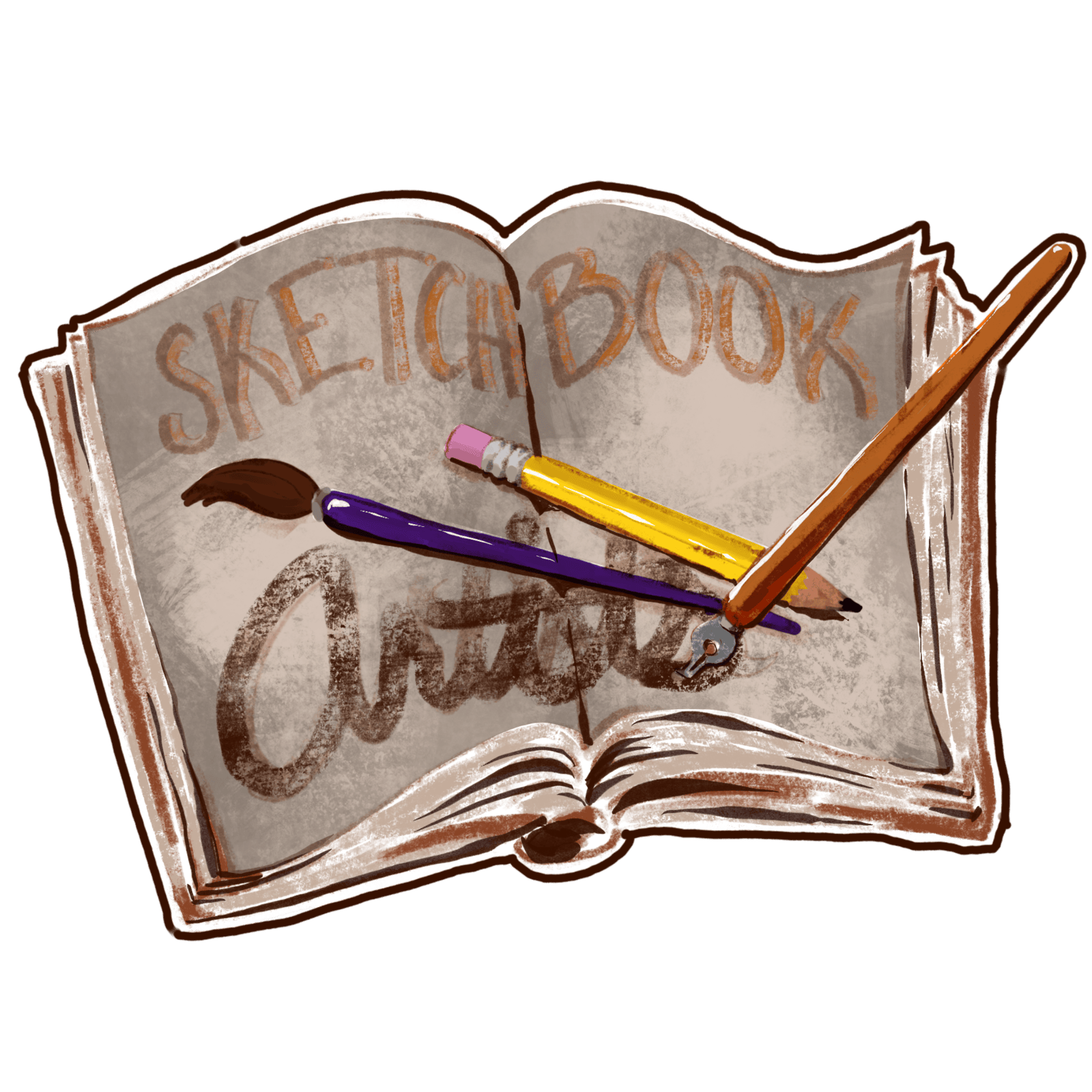Dive into the first page of Sketchbooking
For this week’s Manga Monday Sketch Blog, the first page in the 8 Pages of Sketchbooking is the most essential place to focus for students looking to learn where to start and what to draw when beginning their first manga.
🎯 Why the First Page?
The First Page in your system is all about intention, observation, and inspiration. It’s the ideation phase—a sketchbook page that answers questions like:
“What am I trying to say with my manga?”
“Who are my characters, and what world do they live in?”
“What am I excited about drawing?”
“What stories do I wish already existed?”
For beginners especially, this is the permission slip to explore—not with polished panels, but with raw scribbles, character concepts, emotional notes, word clouds, and visual references that ignite creative direction.
🔍 What Goes on the First Page?
Think of it like a manga mood board that lives in your sketchbook. It might include:
✏️ Loose character doodles (hairstyles, facial expressions, fashion)
✍️ One-sentence story summaries (e.g. “A girl discovers she’s a ghost who can only interact with forgotten objects.”)
📚 Genre influences (shōnen? horror? slice-of-life?)
🎨 Color palette swatches (if working in color)
🌏 World-building notes (what kind of school, city, or spirit realm?)
💭 Dialogue snippets or lines that capture the tone
🧭 Student Challenge: "Spark Your Story"
“What if…”
“In a world where…”
“A girl/boy wakes up to find…”
Pick one, and sketch 3 related objects or symbols that might belong in that story.
💬 Why It Matters
Manga is a fusion of storytelling and stylization, and the First Page of Sketchbooking is where you build the foundation of both. Without getting bogged down in anatomy or perspective yet, students can access the spark of an idea that will guide every panel after.
This phase empowers young manga artists to own their voice—to start from what they love and grow from that place.
🔄 Integrating the 8 Pages (Looking Ahead)
Once a student has drafted a strong First Page, they can move sequentially into:
Page 2: Practicing techniques and style references
Page 3: Composing characters in poses or environments
Page 4: Refining line art and experimenting with tools
…and so on until the final page captures a completed manga page or scene.
But it all begins with the spark—with Page 1.
Would you like a full 1000+ word Sketch Blog post and printable worksheet based on this for this week’s Manga Monday? I can also include visual prompts for students to copy or draw over.
